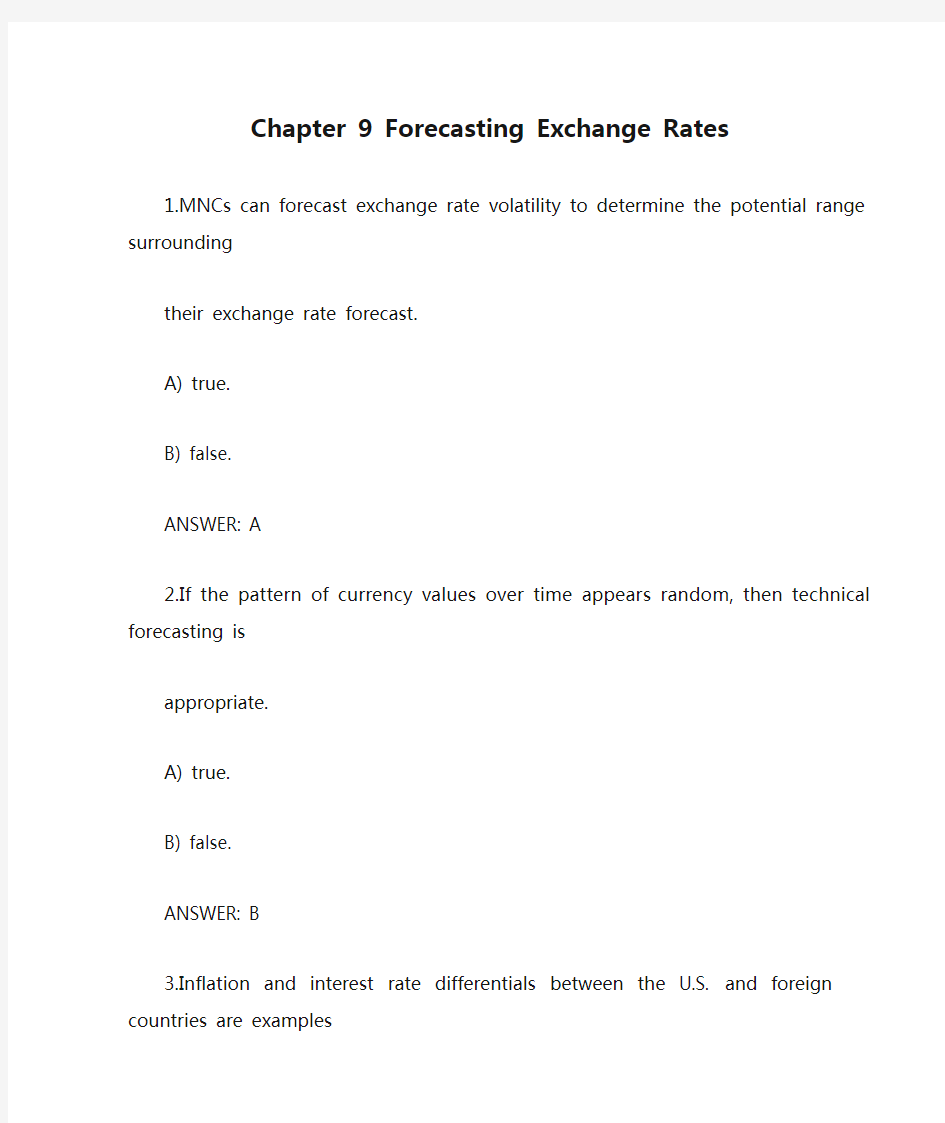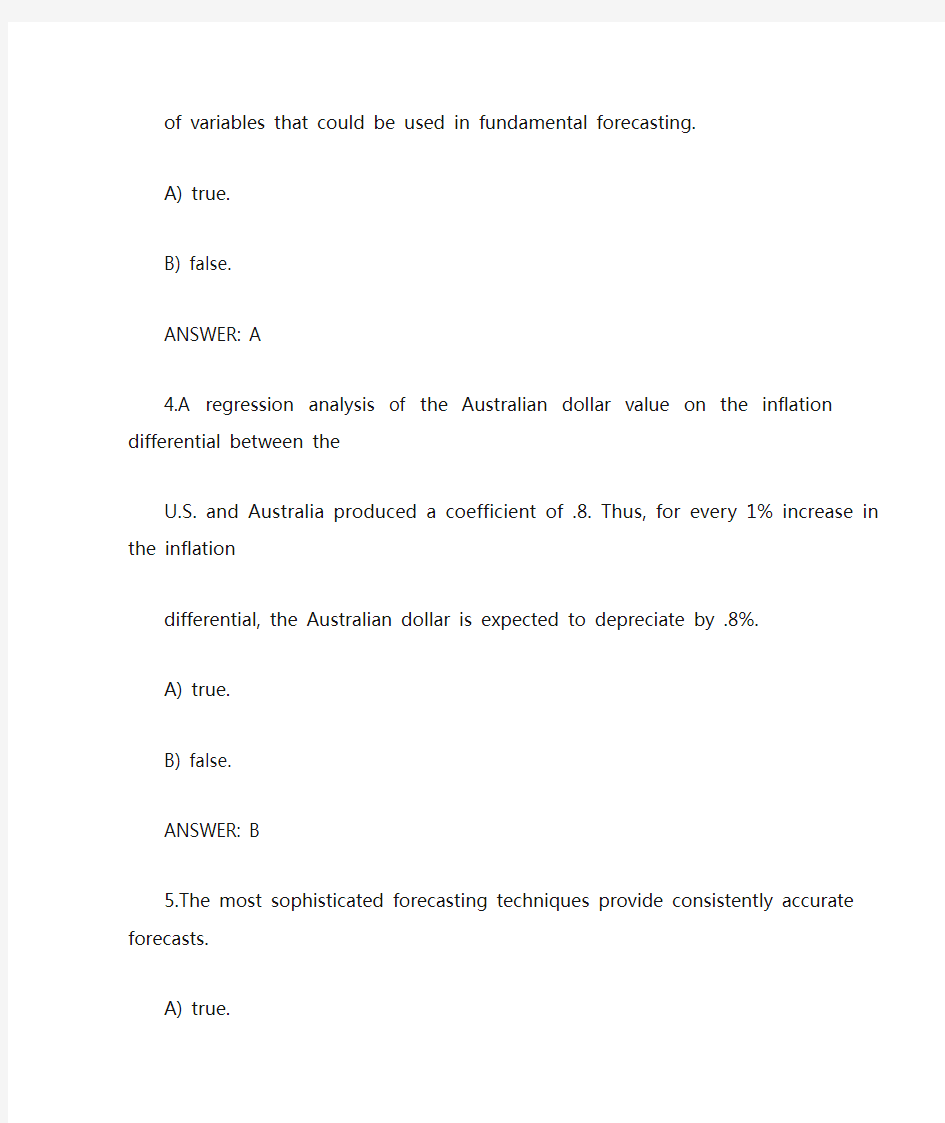Chapter 9 Forecasting Exchange Rates


Chapter 9 Forecasting Exchange Rates
1.MNCs can forecast exchange rate volatility to determine the potential range surrounding their exchange rate forecast.
A) true.
B) false.
ANSWER: A
2.If the pattern of currency values over time appears random, then technical forecasting is appropriate.
A) true.
B) false.
ANSWER: B
3.Inflation and interest rate differentials between the U.S. and foreign countries are examples of variables that could be used in fundamental forecasting.
A) true.
B) false.
ANSWER: A
4.A regression analysis of the Australian dollar value on the inflation differential between the U.S. and Australia produced a coefficient of .8. Thus, for every 1% increase in the inflation differential, the Australian dollar is expected to depreciate by .8%.
A) true.
B) false.
ANSWER: B
5.The most sophisticated forecasting techniques provide consistently accurate forecasts.
A) true.
B) false.
ANSWER: B
6.If the forward rate is used as an indicator of the future spot rate, the spot rate is expected to appreciate or depreciate by the same amount as the forward premium or discount, respectively.
A) true.
B) false.
ANSWER: A
7.Research indicates that currency forecasting services almost always outperform forecasts based on the forward rate.
A) true.
B) false.
ANSWER: B
8.When measuring forecast performance of different currencies, it is often useful to adjust for their relative sizes. Thus, percentages, rather than nominal amounts, are often used to compute forecast errors.
A) true.
B) false.
ANSWER: A
9.The closer graphical points are to the perfect forecast line, the better is the forecast.
A) true.
B) false.
ANSWER: A
10.Foreign exchange markets appear to be strong-form efficient.
A) true.
B) false.
ANSWER: B
11.A motivation for forecasting exchange rate volatility is to obtain a range surrounding the forecast.
A) true.
B) false.
ANSWER: A
12.Two methods to assess exchange rate volatility are the volatility of historical exchange rate movements and the exchange rate's implied standard deviation from the currency option pricing model.
A) true.
B) false.
ANSWER: A
13.Market-based forecasting involves the use of historical exchange rate data to predict future values.
A) true.
B) false.
ANSWER: B
14.Fundamental models examine moving averages over time and thus allow the development of a forecasting rule.
A) true.
B) false.
ANSWER: B
15.A forecasting technique based on fundamental relationships between economic variables and exchange rates, such as inflation, is referred to as technical forecasting.
A) true.
B) false.
ANSWER: B
https://www.360docs.net/doc/5712123674.html,ually, fundamental forecasting is used for short-term forecasts, while technical forecasting is used for longer-term forecasts.
A) true.
B) false.
ANSWER: B
17.If points are scattered evenly on both sides of the perfect forecast line, then the forecast appears to be very accurate.
A) true.
B) false.
ANSWER: B
18.If foreign exchange markets are strong-form efficient, then all relevant public and private information is already reflected in today's exchange rates.
A) true.
B) false.
ANSWER: A
